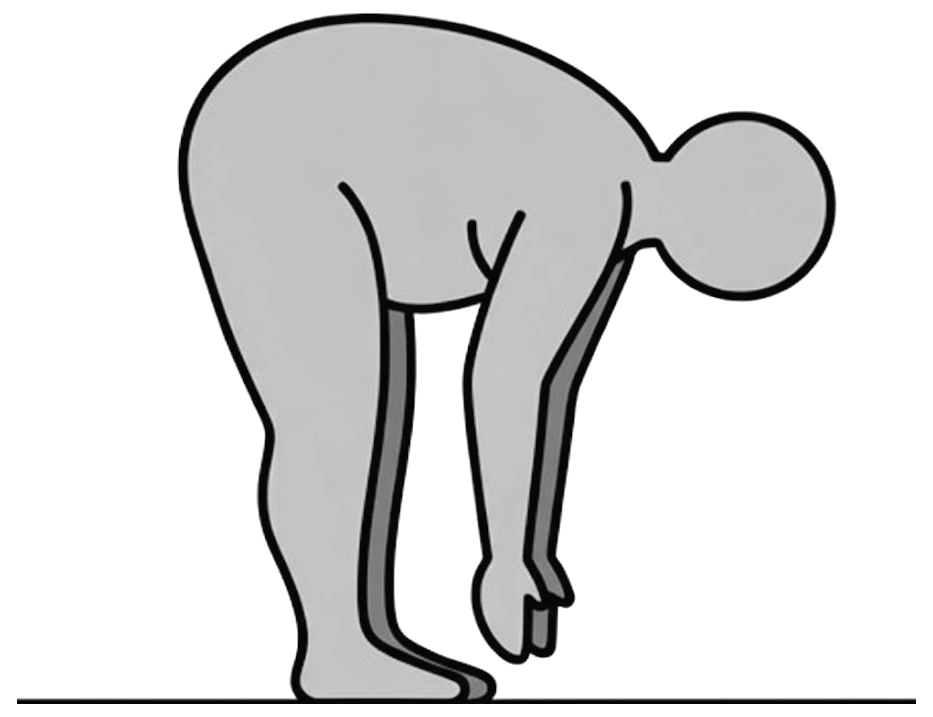Let \(\overrightarrow A\) be a unit vector along the axis of rotation of a purely rotating body and \(\overrightarrow B\) be a unit vector along the velocity of a particle P of the body away from the axis. The value of \(\overrightarrow A.\overrightarrow B\) is:
1. \(1\)
2. \(-1\)
3. \(0\)
4. None of these
1. \(1\)
2. \(-1\)
3. \(0\)
4. None of these
Let \(\vec{F}\) be a force acting on a particle having position vector \(\vec{r}\). Let \(\vec{\tau}\) be the torque of this force about the origin, then:
| 1. | \(\vec{r} \cdot \vec{\tau}=0\) and \(\vec{F} \cdot \vec{\tau}=0\) |
| 2. | \(\vec{r} \cdot \vec{\tau}=0\) but \(\vec{F} \cdot \vec{\tau} \neq 0\) |
| 3. | \(\vec{r} \cdot \vec{\tau} \neq 0\) but \(\vec{F} \cdot \vec{\tau}=0\) |
| 4. | \(\vec{r} \cdot \vec{\tau} \neq 0\) and \(\vec{F} \cdot \vec{\tau} \neq 0\) |
A circular disc A of radius \(r\) is made from an iron plate of thickness \(t\) and another circular disc B of radius \(4r\) is made from an iron plate of thickness \(t/4.\) The relation between the moments of inertia \(I_A\) and \(I_B\) is:
| 1. | \(I_A>I_B\) |
| 2. | \(I_A=I_B\) |
| 3. | \(I_A<I_B\) |
| 4. | depends on the actual values of \(t\) and \(r\) |
A body falling vertically downwards under gravity breaks into two parts of unequal masses. The centre of mass of the two parts taken together shifts horizontally towards:
| 1. | heavier piece |
| 2. | lighter piece |
| 3. | does not shift horizontally |
| 4. | depends on the vertical velocity at the time of breaking |
Consider a system of two identical particles. One of the particles is at rest and the other has an acceleration \(\vec{a}\). The centre of mass has an acceleration:
| 1. | zero | 2. | \(\vec{a}/2\) |
| 3. | \(\vec{a}\) | 4. | \(2\vec{a}\) |

1. torque produced
2. weight
3. dizziness
4. none of these

| 1. | \(2\) | 2. | \(12\) |
| 3. | \(6\) | 4. | \(3\) |
| Assertion (A): | The centre-of-mass of an isolated system of particles remains at rest if it is initially at rest. |
| Reason (R): | Internal forces acting within a system cannot change the velocity of the centre-of-mass which is proportional to the total momentum of the system. |
| 1. | (A) is True but (R) is False. |
| 2. | (A) is False but (R) is True. |
| 3. | Both (A) and (R) are True and (R) is the correct explanation of (A). |
| 4. | Both (A) and (R) are True but (R) is not the correct explanation of (A). |
1. \(1/2\)
2. \(3/5\)
3. \(3/4\)
4. \(4/3\)
A uniform rod of length \(200~ \text{cm}\) and mass \(500~ \text g\) is balanced on a wedge placed at \(40~ \text{cm}\) mark. A mass of \(2~\text{kg}\) is suspended from the rod at \(20~ \text{cm}\) and another unknown mass \(m\) is suspended from the rod at \(160~\text{cm}\) mark as shown in the figure. What would be the value of \(m\) such that the rod is in equilibrium?
(Take \(g=10~( \text {m/s}^2)\)

| 1. | \({\dfrac 1 6}~\text{kg}\) | 2. | \({\dfrac 1 {12}}~ \text{kg}\) |
| 3. | \({\dfrac 1 2}~ \text{kg}\) | 4. | \({\dfrac 1 3}~ \text{kg}\) |






